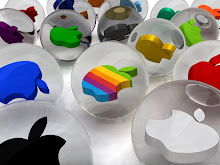Chapter 1
The way to think about a microcomputer is to realize that it is one part of an information system. There are 5 parts of an information systems:
The way to think about a microcomputer is to realize that it is one part of an information system. There are 5 parts of an information systems:
- People
- Procedures
- Software
- Hardware
- Data
People
- An essential part of the system.
- The most important part of an information system.
- Make people become more productive.
Procedures
- Rules or guidelines for people to follow when using software, hardware and data.
- Typically documented in manuals
- Written by computer specialists
Software
- Program which consists of step by step instructions that tell computer how to do its work.
- Purpose is to convert data into information.
- Consists of system and application software.
System software
- Enables application software to interact with computer hardware.
- Consists operating systems which coordinate resources, provide an interface for user.
- Consists utilities which perform specific task to manage computer resources.
- Consists device drivers.
Application software
- Includes basic and specialized applications.
- Basic applications widely used inn nearly all career areas.
- Specialized applications focus on specific disciplines and occupations.
Hardware
- Consists of physical equipment.
- Controlled by it software and processes data to create information.
- Consists devices that can follow instruction.
- Types of computers
- Supercomputers - Most powerful type.
- Mainframe computers - Great processing speed and data storage.
- Minicomputers - Use for specific purposes.
- Microcomputers - Least powerful but most widely used (desktop, notebook, tablet PC or PDA)
- Microcomputer hardware (four basic categories)
- System unit - Holds the program and data currently being processed.(microprocessor & RAM)
- Input/Output devices - Translators between humans and computers. (mouse & monitor)
- Secondary storage - Holds data and program. (hard disks & optical disks)
- Communication devices - Connect the system unit to other computers and the Internet.
Data
- Consists of unprocessed facts.
- Information is data that has been processed.
- Four common types of files
- Document - By word processor to save documents.
- Worksheet - By electronic spreadsheets to analyze things.
- Database - By database management to contain highly structured and organized data.
- Presentation - By presentation graphic to save presentation materials.
Connectivity
- Is an additional part to today's information systems.
- It allows computers to connect and share information.
- Concept describing the ability of end users to tap into resources well beyond their desktop.
- Networks are connected computers that share data and resources.
- The wireless revolution is the widespread of mobile communication devices.
- Internet is the world's largest network.
Careers in IT
- There are a lot of them. (Webmaster, technical writer, programmer, etc)
-=-=-=-=-=-=-=-=-=-=-=-=-=-=-=-=-=-=-=-=-=-=-=-=-=-=-=-=-=-=-
Beside the elements from the text book and slides shows, Ours lecturer Sharin Hazlin Huspi is also sharing somethings that attractive for us during the class.
Do you know what is it ??
That is a few meaningful video clips from the network ....
When we saw those video clips, it immediately attracted ours attention. It look creativity and wonderful. It make the class become more joyful and this also made us pay more attention during the class.
Finally, after going through the blog...
Do you have a deeper understanding regarding the Information Technology, The Internet & also Yourself ?
References from
Computing Essentials Complete 2010 by Timothy J.O'Leary and Linda I.O'Leary from McGRAW Hill.











0 comments:
Post a Comment